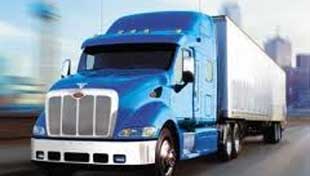| |
|
| |
|
 |
Supply
Chain by the Numbers |
| |
|
| |
- July 27, 2018 -
|
| |
|
| |
|
| |
|
| |
Tesla Seeks Help from Vendors for Cash Flow Woes; UPS Sees Strong Parcel Rate Growth; We are Consuming Earth's Resources at Record Clip, Group Says; US Freight Shipment Expense Soars in June |
| |
|
| |
| |
| |
| |
10 |
|
That's about how many of its suppliers – mostly in the capital equipment or major project areas - that are being asked by Tesla to rebate some portion of the revenue they have received from electric car maker since 2016. The news started about a week ago, when to Wall Street Journal reported that it had seen a memo sent to one supplier asking the company that it return what Tesla called a meaningful amount of money from its payments to the firm since 2016. That memo stated that all suppliers were being asked to help it become profitable, but it is unclear how many were asked for what might generously be called rebates on contracted spending amounts retroactively. Before the article was published, Tesla declined to address the specific memo reviewed by the Journal. It did tell the paper, however, that such requests are a standard part of procurement negotiations to improve its competitive advantage. But it later issued a statement saying less than 10 vendor were asked for the rebates. Cash flow issues dog the company and CEO Elon Musk.
|
|
|
| |
| |
|
|
|
That was the average revenue per US parcel at UPS in Q2, up 4.6% year over year, according to the company's earnings release this week. That implies strong pricing power and UPS cited strong pricing gains as helping its top line in Q2. Revenue for its US domestic package business rose 6.3% from a year earlier to $10.35 billion, while total revenue surged 9.6% to $17.46 billion. UPS also said ecommerce volumes continued to soar, yet total average daily package volume for the second quarter was 19.1 million, up just 3% from a year earlier. How to explain those seemingly contradictory perspectives? The answer is easy: despite rapidly rising ecommerce shipments, the bulk of UPS' parcel volumes are still B2B deliveries, which are growing much slower than ecommerce parcels. Despite the good revenue news, operating profit fell 25% in its US domestic package segment, while overall operating profit fell 13%. Planned increases in pension expense and costs for network projects impacted into the company's bottom line. Those network projects include a soon to open domestic ground hub in Atlanta, its second largest, said to incorporate "the latest automated sortation and network control technologies." |
| |
| |
|
| |
| |
| |
15.9% |
 |
That was the rate of year over year growth in US freight shipment expenditures in June, according to the Cass Freight Index Report released last week. That's is a big jump on its own, but is brought into even sharper relief by the fact that shipment volumes themselves rose at a rate of 7.2% - a healthy increase for sure, but less than half the rate of spending growth, implying rapidly rising rates. "Demand is exceeding capacity in most modes of transportation by a significant margin. In turn, pricing power has erupted in those modes to levels that continue to spark overall inflationary concerns in the broader economy," the Cass report says. It adds that "many modes are reporting limited amounts of capacity or even no capacity at any price shippers are willing to pay." But that gain in shipment volumes is actually down from the 10%+ growth seen in the months of January through May, signaling, Cass says, that we may be reaching a peak. |
| |
| |
| |
|
|
|
| |
 |
 |
| |
|
|
| |